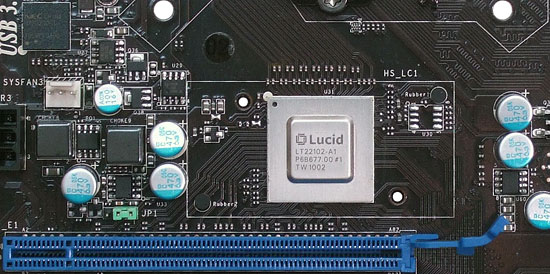HydraLogix Vs. SLI And CrossFire: MSI's P55A Fuzion Tested
LucidLogix forges ahead with its promise of multi-GPU compatibility across multiple graphics architectures and platforms. Today we see how its latest drivers stand up to the performance standards of CrossFire and SLI on a much more cost-sensitive board.
Bigger, Better, Faster, More?
Continuous development has kept LucidLogix at technology’s cutting edge, but is the company finally ready to take a market lead? Is it finally viable to mix your Radeons and GeForces on the same motherboard? Performance improvements, bug fixes, and an expanded portfolio of 145 3D titles compel us to take a second look at this unique and potentially game-changing technology.
Like the NF200 from Nvidia, Lucid’s Hydra 200 supplies 32 lanes of PCIe 2.0 connectivity to two graphics cards, consuming 16 lanes from the platform’s primary PCIe controller. Similarities between these two devices end at the bridge function, however. While Nvidia relies on the fact that all cards in an SLI array require the same data by simply repeating that information to all cards (a feature Nvidia calls Broadcast), Lucid’s controller adds logic to determine what data each card will use. HydraLogix (the name Lucid is using for its technology) breaks a 3D workload into multiple tasks and attempts to assign those tasks based on the capabilities of each GPU.
The theoretical benefits of the additional controller are multiple, beginning with the ability to load-balance cards of dissimilar performance. Nvidia’s SLI requires that all graphics cards be identical, significantly hindering later upgrades if a matching card cannot be found. While AMD loosens its requirements by allowing different cards of the same generation to be mixed, putting these in an array will force the better card to operate using the lesser card’s specifications.
Conversely, Lucid’s technology allows two cards of vastly different capabilities to both operate at 100% load.
Take the two examples of the GeForce GTS 450 and Radeon HD 5770, which are around half as powerful as the GeForce GTX 460 and Radeon HD 5870. Using load balancing, it’s possible for the half-sized GPU take on one-third of the load, while its bigger sibling takes on two-thirds of the load.
Lucid goes a step beyond making graphics processors of different scale work at full performance, however, in that the company even supports mixing different architectures. While Radeon HD 5870 plus HD 5770 or GeForce GTX 460 plus GTS 450 sound like interesting combos, an AMD and Nvidia pairing could prove more intriguing.
Thus, while our launch coverage of Lucid's first HydraLogix-based motherboard focused primarily on mixing cards of different generations, today’s tests examine various pairings of current-generation, mid-priced-enthusiasts parts.
Get Tom's Hardware's best news and in-depth reviews, straight to your inbox.
Current page: Bigger, Better, Faster, More?
Next Page Mid-Priced Motherboard: MSI’s P55A Fuzion-
duk3 Looks good on the 1st 2 games and synthetics.Reply
I hope Lucid gets all the issues worked out. -
anacandor So basically it's just a universal CF/SLI connecter built into the motherboard? Seems odd that it's taken this long to be developed, but great nonetheless :)Reply -
Darkerson Looks like it has some promise, if they can further work the kinks out. Something to keep an eye on in the future.Reply -
punnar I can see it as a standard in the future. I think I will buy a board with Hydralogix on my next build.Reply -
Yargnit It would have been nice to see how well this works with two differing AMD/ATI cards and two Nvidia cards. For instance someone has a GTX260 and wants to add a GTX460, or someone with a AMD5850 who wants to pick up a new 6870 (damn numbering change) to go with it.Reply
Also comparing performance pairing two cards from the same generation (say GTX 460 + GTX 470) vs differing generations. (GTX 260 + GTX460)
Lastly what affect would pairing a two cards with varying amounts of memory have? (two regular versions of a card vs 1 reg + 1 dbl memory vs 2 dbl memory) Since it isn't clear from what I've read if both cards would be limited to lowest memory level or not.
Interesting tech for sure -
sudeshc this should become a standard, allowing us to enjoy features from both manufacturers. I would also be prepared to pay few extra bucks for this as well.Reply
-
Maziar Overall,Lucid is a great idea of mixing different cards but it still needs quite a lot of work with drivers.Reply -
Yargnit Ah, thank you. It was posted before I was frequently following the site, I'll give it a look.Reply

